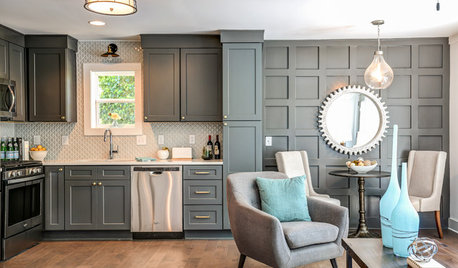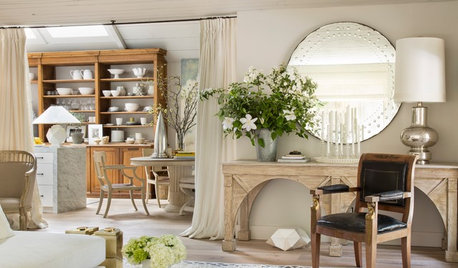Dormancy/Storage Q&A with Mr. CB
Here are the series of questions I asked Mr.CB the other day. He as always answered back the next day.
Maria: Some people in the warmer states grow their hippeastrums planted in the garden and are continously growing all year round with no dormancy. Some grow their potted amaryllises outside spring/summer and bring them inside the house to continue growing fall/winter, again no dormancy. You wrote about bulbs that are not put to rest would eventually have poorer quality in health and bloom. If these continously grown bulbs (assuming they are healthy)are given dormancy now, can they expect more scapes or flowers from it once it's planted again?
Mr.CB: A dormancy provided now will certainly assist the flowering ability of the bulbs later. Think of it as sleep.
Maria: Why is it so that our newly purchased bulbs are 'guaranteed' and would surely give out at least 2 scapes? And why is it so that the following season, these bulbs (with dormancy or none)do not perform as good and would usually give out one scape and if we get lucky, another scape after a few months later on. Imbalance in temperature high/low during growing season or storage? Lack or wrong fertilizer? Lighting? Incorrect storage?
Mr.CB: We give the bulbs copious nutrients, sunlight and ideal conditions in the season prior to you receiving your bulbs. It is important to remember that the current summer season gives rise to the embryo flowers for next season. That is why feeding after flowering is crucial to next year's blooms. When you first receive the bulb, the embryo is already fully formed, and the bud simply has to push up out of the bulb and open up. The bulb may also have some of the following season's buds starting to form, but it is the time after this season's flowers when the following season's buds must develop. Lack of water, nutrient or sunlight or indeed any stress will cause these flowers to abort or not form at all.
It is not just one factor that pinpoints reduced flowering in the second year. Like you or me, the bulb has a variety of requirements to prevent stress. There is a more comprehensive idea of treatment at www.hadecoamaryllis.com
Also, bear in mind that each bulb has a fertile period - a life cycle during which it produces the best flowers between years 3 and 5, and thereafter begins reducing its viability. After year 8, the average bulb will stop producing flowers.
Maria: You mentioned about a certain amount of soil moisture to be maintained with stored bulbs. How much moisture is this and how can we maintain this without watering them when the soil dry out? Mulch the pot? And if ever we cannot give these conditions to the dormant potted bulb, won't we be better off with just unpotting the bulb and store them bareroot? I keep my newly purchased bulbs in the vegetable compartment of my refrigerator where the temp is maintained at around 50F and they do fine with that. Most of our potted bulbs are stored in an unheated garage where the temp. would go down below 42F in some days but not freezing and above 55F in some days. Would this have an effect on the bulbs?
Mr.CB: A bulb left in its pot for dormancy would be better stored with a mulch to maintain some slight moisture in the soil. Bear in mind that by imitating the natural environment we create automatically the best conditions for the bulb. In nature the bulbs remains in soil but does not receive much if any water in winter. I prefer to store the bulbs dry and in something like shredded paper or wood shavings. This gives me the opportunity to clean the bulb, rid it of pests and fungus and to change the soil completely. The moisture in the bulbs will then be kept consistent without a build- up of water against the skin of the bulb. Temperatures below 42 F can do damage, but if the bulb is covered with sufficient paper/ shavings that will serve to insulate the bulb provided the temperature drop is only for a few hours at a time. Temperature fluctuation is fine, but within the limits of 42F to 60F. Again this is natural - the bulbs would experience this in their native habitat.
Maria: A Holland based bulb company mentioned about maintaining a certain humidity level together with the right temp. in preparing bulbs. Is a certain humidity level necessary for bulb storage? All the while I thought, as long as it's cold and dry, it's good!
Mr.CB: Commercial growers maintain the humidity very precisely, and this is to preserve the roots as well as possible without introducing mould. At home you do not need to be as specific. The humidity used by commercial growers ranges from 65% to 75% depending on the stage of storage. At home it is far easier to create an environment with limited air flow - an open cardboard box with shredded paper surrounding the bulb.





bluebonsai101
mariava7Original Author
Related Discussions
Roses from Home Depot arrived and....
Q
santini hardy to zone 5????
Q
When They Come Back in For Winter
Q
Papillio's new blooms
Q
soultan
jodik_gw
mariava7Original Author
dizzy77
jodik_gw
soultan
jodik_gw
soultan
jodik_gw
soultan
jodik_gw
soultan
jodik_gw
haweha
soultan
jodik_gw
mariava7Original Author
brigarif Khan
mariava7Original Author
soultan
jodik_gw
haweha
jodik_gw
dizzy77
jodik_gw
mariava7Original Author
dizzy77
mariava7Original Author
dizzy77
soultan